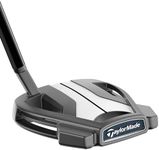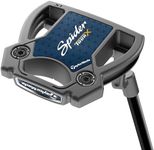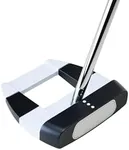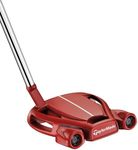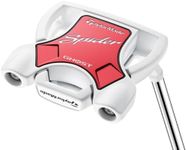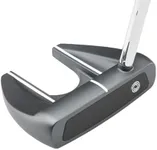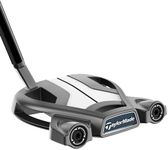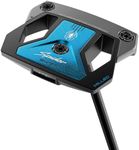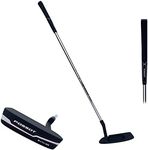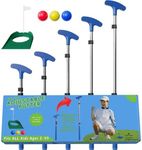Buying Guide for the Best Putters
Choosing the right putter can have a huge impact on your golf game, particularly on the green where precision and control are key. Because putting is such a personal part of the game, finding a putter that matches your stroke style, comfort preferences, and even your eye is essential. By understanding the main features of putters and how they influence performance, you can pick one that feels natural and helps you sink more putts.Putter Head ShapeThe shape of the putter head is important because it affects how the club feels and performs during your stroke. Generally, there are two main types: blade and mallet putters. Blade putters are more traditional, have a slimmer profile, and are often favored by players with a straight or slight arc in their putting stroke. Mallet putters are larger, provide more stability, and can help with alignment, which makes them good for players who struggle with accuracy or have a more pronounced arc. To choose the right one, think about whether you want something classic and lightweight (blade) or stable and forgiving (mallet). Try holding both to see which feels more comfortable and natural to your stroke.
LengthPutter length affects your posture and eye position over the ball. Standard putter lengths range from about 33 to 35 inches, but what's 'right' depends on your height and how you stand while putting. If the putter is too long, you might stand too upright; too short, and you could hunch over. Ideally, you want a length that lets your eyes rest above the ball and your arms hang naturally. Try out different lengths while taking your regular putting stance to find the size that feels best for you.
WeightThe weight of a putter influences the feel and control during a stroke. Heavier putters can help create a smoother, more pendulum-like stroke, which some players find easier on fast greens or if they struggle with nervous hands. Lighter putters allow for more feedback and are sometimes preferred by players with a soft touch or who play on slower greens. Consider your stroke and the green speeds you usually play on to determine which weight feels most comfortable and steady in your hands.
Balance (Face-Balanced vs Toe-Hang)Putters come in two main balancing types: face-balanced and toe-hang. A face-balanced putter keeps the face pointing upward when balanced on your finger and suits players with a straight-back-straight-through stroke. A toe-hang putter points its toe downward in the same test and fits golfers with an arc in their stroke. To figure out which is better, watch your natural putting stroke; if your path is straight, a face-balanced putter could help you keep the face square, while an arcing stroke will benefit from the natural 'release' of a toe-hang putter.
Grip Style and SizeThe grip of a putter plays a big part in comfort and control. Grips come in different shapes and sizes, from slim traditional types to thick, oversized ones. Larger grips can help reduce hand and wrist movement, promoting a smoother stroke, which suits players prone to shaky hands or 'yips.' Slimmer grips provide more feedback and feel, preferred by players who rely on touch. Try different grip sizes and textures to see which helps you maintain a relaxed, controlled hold while putting.
Alignment AidsAlignment aids are markings or lines on the top of the putter head that help line up your putts. These can be simple dots, lines, or even bold sightlines on mallet putters. They don't change how the putter strikes the ball but can help improve aim and boost your confidence. If you sometimes find it hard to line up your putts correctly, look for a putter with a clear, easy-to-see alignment aid. If alignment comes naturally to you, you might prefer a cleaner look.
